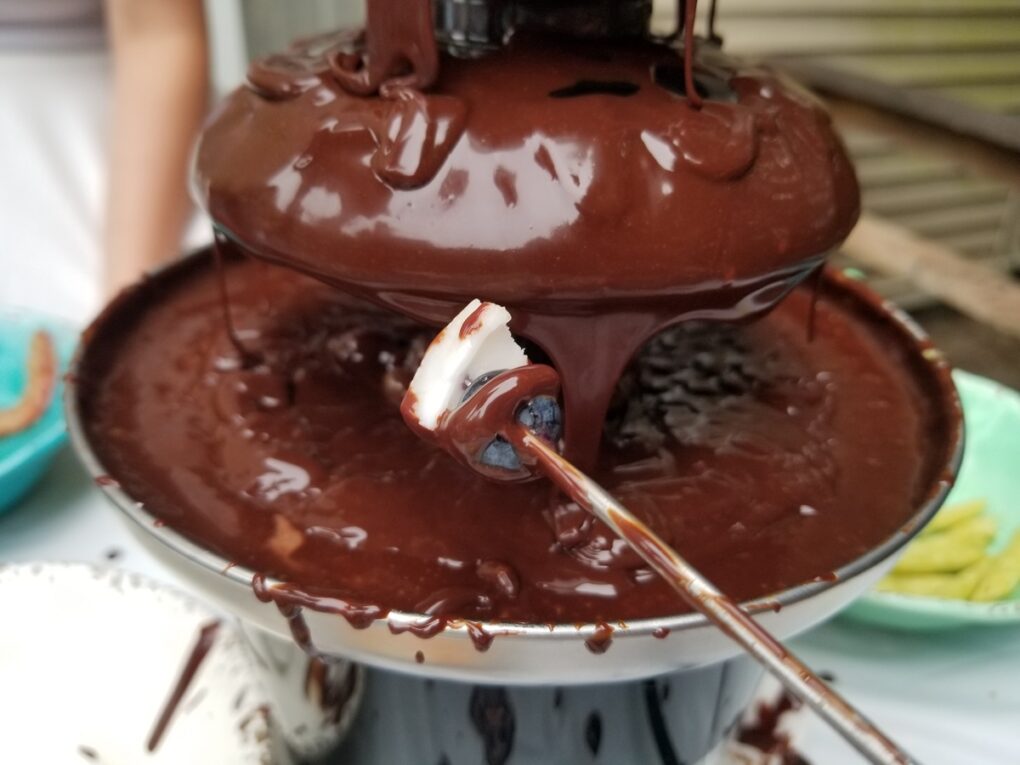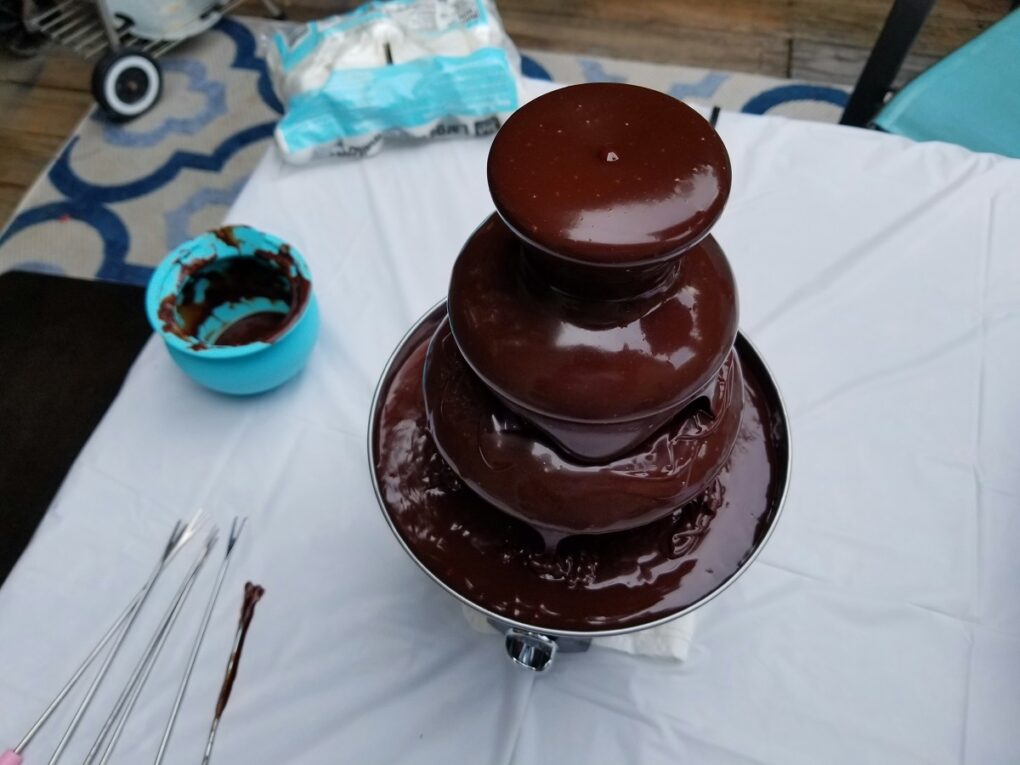One of cinema’s mysteries is the truth about the chocolate river in the movie Willy Wonka & the Chocolate Factory. Reality is somewhere between the limits of Germany in the seventies and our wildest fantasies. Although it contained traces of chocolate, the rest of the story is less appetizing.
For a bit of background, the 1971 fantasy film showcases an imaginative take on how candies are manufactured, and the mystery of the man and the factory making them. The story starts off following the difficult life of Charlie Bucket, played by Peter Oustrum, and his stroke of luck when he pulls a literal golden ticket from a Wonka chocolate bar.
This lands him one of 5 spots on a once-in-a-lifetime tour of the fabled candy factory. The movie really sets the tone when Wonka, played by Gene Wilder, brings his guests to the first attraction: a large room made entirely of candy.
Despite its dark undertones, the movie is presented in a light-mannered way; you’re basically just along for the ride. But the chocolate river in Wonka’s famous film was not nearly as fake as the other candy in that room.

Jump To
Was the Chocolate Waterfall in Willy Wonka Real?
In the book itself, Wonka says that theirs is the only factory in the world that mixes their chocolate by waterfall. This alludes to the chocolate-making process of conching, which aerates and smooths texture. As far as the liquid in the chocolate river itself, the circulating fluids were indeed part-chocolate, but it’s more than meets the eye.
Paris Themmen, who played Mike Teevee, allegedly answered an AMA on reddit stating that the river was initially water with food coloring. However, in a LIFE paper back feature of the movie, the art director Harper Goff reveals the main composition of the chocolate river in a 2009 interview for the Director’s Guild of America.
Goff describes the concoction as “a lot of weird stuff” or what he calls “dark water.” The main ingredient was indeed chocolate powder, but it eventually released a foul odor after sitting for a while, and the churning of the falls caused it to go white. The team’s solution was to add anti-shampoo powder and other chemicals.
“…The river looked great, but it felt like what it was: cold, dirty water.” – Mel Stuart
In a Harper Goff feature on dangerousminds.net
In an interview with the cast, Julie Dawn Cole, who played Veruca Salt, also recalled that the river sat for three weeks until filming was completed, and people had been dumping leftover coffee into it. IMDB’s trivia section claims that they used 150,000 gallons of water to create the chocolate river.
The audience’s first taste of horror in the movie actually happened when one of the children, Augustus Gloop, played by Michael Bollner, falls into the chocolate river and was sucked up into a clear drain tube. Bollner described the chocolate river as “stinky water,” and revealed that it was actually only ten centimeters deep with a one square meter hole for him to fall into.
In the 2005 remake, Charlie and the Chocolate Factory, UK chemical company Vickers was approached to create a brown, non-toxic substance for their version of the chocolate river. Instead of computer graphics, about one million liters of the fake chocolate river water was recirculated, while a more viscous version was used for the waterfall.
CEO of Vickers, Julian Driver, revealed in an article that the final mixture was made of 1% hydroxyethyl cellulose, 0.2% organic pigments, and food-grade biocide in a water base. A production plant was even built on site to manufacture 1.25 million liters of the fake chocolate.
Total filming took twelve weeks and many pounds of stabilizers, and some biocides were added to control microbial growth. Meanwhile, one famous online personality tried to make a real life chocolate river in 2022; see the video below for a look at the amazing set he created.
Could You Make a Chocolate River in Real Life?
Just because you can make it doesn’t mean you should. Much like a chocolate fountain, with enough money, you could probably make a mini chocolate river flow for a very limited time. But that would require a massive shallow heating base and a lot of electricity.
Relying on water to make it flow is also a no-go, because chocolate is insoluble in water. That’s actually why water causes chocolate to clump up and crumble, or develop various types of bloom.
Chocolate also contains dairy. All these organic components will eventually go bad. So even if by some miracle you managed to chill the river, it’d no longer flow and only last a few days once exposed to the open air. On top of all this, chocolate tends to absorb the odor of its surroundings, so it’s just highly impractical.
But if you must create one, it’s probably a good idea to scale down your efforts. Try using a chocolate fountain to keep the chocolate liquid and flowing. You’d first need to design a short, heated channel for the chocolate to flow around and back into the chocolate fountain.

Fun Facts About Willy Wonka
1) Although one third of the set pieces in the “Dream Factory” set, designed by Harper Goff, were real and edible, the teacup Gene Wilder (Wonka) bit into was not one of them. It was made of wax. This is according to the LIFE paperback, Willy Wonka & the Chocolate Factory & 2001 Documentary, Pure Imagination.
2) Rusty Goffe, who has since been in several other famous film franchises, was just 22 years old when he was cast to play one of 10 Oompa-Loompas. He had the longest number of scene retakes, at 67, according to a Cast Reunion interview on TODAY.
3) The actor playing the blown-up gum chewer, “blueberry” Violet Beauregard, portrayed by Denise Nickerson, was immobilized in a styrofoam suit and rolled for eight hours, according to a 2001 documentary.
4) In 1970, Quaker Oats was about to introduce a new candy bar. The film’s director and producer took this chance to pitch the children’s novel, Charlie & the Chocolate Factory, as a way to promote it. The title of the movie was changed to Willy Wonka & the Chocolate Factory to put emphasis on the up-and-coming Wonka chocolate bar from Quaker Oats.
5) The recognition the film enjoys now didn’t come immediately. Reception during its screening was lackluster. Even the author of the book on which it was based, Roald Dahl, didn’t like it. However repeated viewings on television over the following years would cement the chocolate film as a classic.

















Comments
No Comments